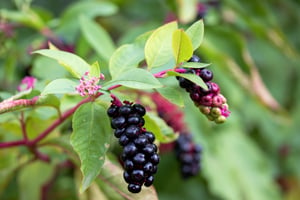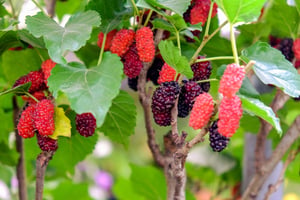Game feeders for deer are limited and do not fulfill all the gaps in their annual required nutrition. Proper natural habitat management and the creation of planted food plots is essential to any serious white-tailed deer management plan.
Just because it isn't hunting season doesn't mean you should neglect the importance of providing supplemental nutrition for your deer. Providing deer corn and protein via feeders before and during the hunting season helps aggregate them for hunting purposes and provide some nutritional value during harsh winters when natural food sources are scarce. Unfortunately, the benefits of game feeders for deer are limited and do not fulfill all the gaps in their annual required nutrition.
This is where proper natural habitat management and the creation of planted food plots become essential to any serious white-tailed deer management plan. Food plots typically encompass a small fraction (3-5%) of a property’s total acreage, whereas natural vegetation is found on most of each property. These natural areas will vary in value as food sources for wildlife, which emphasizes the need for proper habitat management.
Deer Diets and Nutrition
Deer will transition between the proportional use of natural food sources consisting of browse, forbs, mast, and grasses depending on the time of year and regional availability of each. Deer will readily eat ripe fruits in the summer and acorns in the fall like candy, but the composition of their diets is weighed more heavily toward the use of browse and forbs which are more available.
A study conducted by the Nobel Foundation revealed that deer diet preference in the Cross Timbers Ecoregion of Texas fluctuates from heavy use of forbs in the spring and summer to browse in the fall and winter (Bar Graph). Forbs are herbaceous flowering plants that are not grasses, which are commonly referred to as weeds to most people. A “weed” can be any plant that competes for resources of desired plant species. For a cattle rancher or agricultural farmer these forbs are truly weeds, but for a wildlife biologist these forbs are essential parts of wildlife diets. Food plots alone are not enough to feed your deer year-round. An integrated approach to deer management should include provisions for both natural and supplemental food sources.
Food plots are meant to provide a nutritional and palatable option for deer when natural sources are scarce or limited. Additionally, big buck management requires considerations for age, genetics, and nutrition. Leaving one of these aspects out of your management plan will never result in the quality of bucks you are managing for. This blog post will focus on the benefits of both natural habitat management and planted food plots along with arguments for utilizing both in your wildlife management plan.
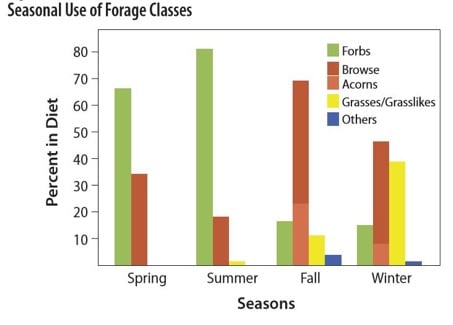
Planted Food Plots
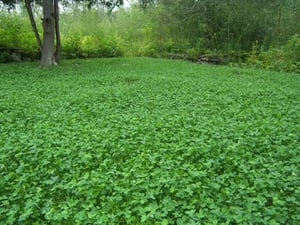 Planted food plots lack diversity but provide an overwhelming increase in yield for the small area they are planted on. Planted food plots can be comprised of seed mixes, but often they perform better as a monoculture. When planted as mixes, food plots can experience lower yields due to competition for nutrients, space, water, and light. Oats, wheat, peas, beans, clovers, millet, sorghum, and their many varieties are commonly planted in food plots. The nutritional boost from food plots can make a substantial difference in deer herd body condition, fawn survival, carrying capacity, and antler size. Managing for antler size through cull management alone will only yield genetically superior deer that never reach their full potential. Supplementing deer diets with protein and nutrient rich plants in crucial developmental life stages will ensure each deer reaches their potential and ultimately will help you cull the less desirable specimens.
Planted food plots lack diversity but provide an overwhelming increase in yield for the small area they are planted on. Planted food plots can be comprised of seed mixes, but often they perform better as a monoculture. When planted as mixes, food plots can experience lower yields due to competition for nutrients, space, water, and light. Oats, wheat, peas, beans, clovers, millet, sorghum, and their many varieties are commonly planted in food plots. The nutritional boost from food plots can make a substantial difference in deer herd body condition, fawn survival, carrying capacity, and antler size. Managing for antler size through cull management alone will only yield genetically superior deer that never reach their full potential. Supplementing deer diets with protein and nutrient rich plants in crucial developmental life stages will ensure each deer reaches their potential and ultimately will help you cull the less desirable specimens.
Food Plot Planning
The results of directly managing land for wildlife is almost always beneficial. I say almost because it is possible that food plots be placed in the wrong locations or replace habitat that was already benefiting wildlife in other ways. Planted food plots should be strategically placed in the proper soils, with the best possible aspect and shape, and in locations that will improve the availability of food for wildlife. Moisture is a key factor in determining where to place food plots. Winter plots are less of a concern due to the abundance of rainfall, but spring - summer plots will require a location that holds water longer. Planted plots also come with added costs associated with establishment and protection such as seeds, equipment, fertilization, exclusion fencing, and herbicide applications at site prep. Many planted species will require protection from overgrazing until they are mature. Cows will have to be fenced out completely, whereas deer need to be excluded with portable electric fencing while young plants are developing.
Electric Exclusion Fencing for Deer Food Plots Smaller plots (< 1 acre) are often placed in wooded openings, whereas larger plots (2+ acres) can replace former agricultural fields or pastures. A rule of thumb for food plots is that larger is always better. Small plots can be overgrazed and trampled by deer herds. One large plot is more beneficial than several small plots, because small plots can be overgrazed quickly whereas larger plots allow the deer to move on to fresh plants allowing the browsed sections to regrow. Deer will feed in the areas closest to escape cover first and work their way towards the center of plots. For this reason, the shape of food plots is typically a rectangle or square depending on the available space and aspect of openings.
Smaller plots (< 1 acre) are often placed in wooded openings, whereas larger plots (2+ acres) can replace former agricultural fields or pastures. A rule of thumb for food plots is that larger is always better. Small plots can be overgrazed and trampled by deer herds. One large plot is more beneficial than several small plots, because small plots can be overgrazed quickly whereas larger plots allow the deer to move on to fresh plants allowing the browsed sections to regrow. Deer will feed in the areas closest to escape cover first and work their way towards the center of plots. For this reason, the shape of food plots is typically a rectangle or square depending on the available space and aspect of openings.
Natural Habitat Management
Natural habitat management uses an opposite approach with more choices and lower yields over much more area. This allows deer to have food wherever they are instead of forcing them to navigate to food plots to eat desirable foods. Natural habitat management is a great option when financial resources are limited, to fulfill requirements for Wildlife Management Property Tax Valuation, in areas where soil quality is low, and/or moisture is limited. Not all soils will support agricultural uses and may be better managed for wildlife habitat or left fallow. That is not to suggest that natural vegetation cannot or should not be utilized in the best soils, but I am arguing that both planted food plots and improved natural vegetation be used together. It is intuitive then to plant the food plots in the best locations and manage the remainder of lands for natural vegetation.
Natural vegetation management implies that some sort of habitat improvement activities have been undertaken to improve and increase natural food sources such as browse, forbs, mast, and/or grasses. This could include converting sod grass pastures to native warm season grass prairie, planting wildflowers, disking fields to improve forb diversity, planting native mast producing shrubs and trees, or any other habitat modification that increases the availability and quantity of natural food sources. Lastly, Texas property taxes utilizing a Wildlife Management Valuation require certain activities geared toward the improvement of conditions for wildlife on your land. The improvement of natural habitat would partially satisfy these requirements through range enhancement, brush management, and/or wildlife restoration. Planted food plots for hunting purposes are not considered a wildlife management activity for Texas property taxes.
 Chickasaw Plum Chickasaw Plum |
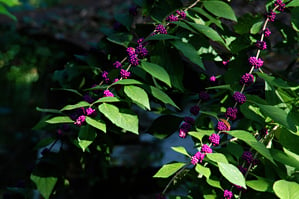 American Beauty-berry American Beauty-berry |
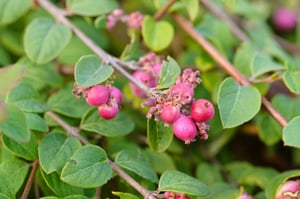 Coralberry Coralberry |
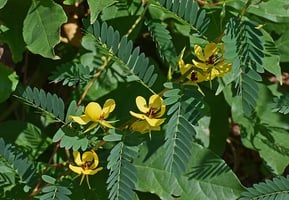 Partridge Pea Partridge Pea |
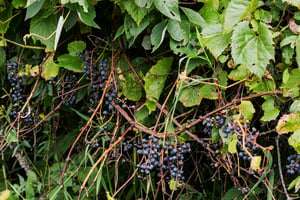 Grapevine Grapevine |
 Mesquite Mesquite |
|
|
Pokeberry |
|
Reb Mulberry |
|
Other Wildlife that Benefit from Food Plots
Most food plots are planted solely to benefit white-tailed deer, but they are also beneficial to game birds like turkey, quail, dove, ducks, geese as well as numerous non-game mammalian and avian species. Besides the obvious addition of food in the form of planted species, food plots provide cover for ground nesting birds and small mammals, hot spots for insects, and can fix nitrogen to the soil when legumes are planted.
Quail and turkey chicks utilize insects like grasshoppers that are attracted to food plots as a staple food source early in life. Additionally, turkey require openings adjacent to wooded cover for social and reproductive activities. Natural habitat management activities undertaken to improve conditions for most non-game species will indirectly benefit deer too. Deer are generalists in nature and can thrive in a variety of habitats. Management actions that benefit songbirds, ducks, squirrels, or upland game birds will also benefit deer.
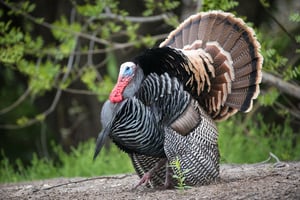 Wild Turkey Tom Wild Turkey Tom |
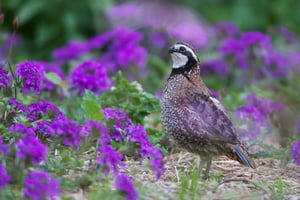 Northern Bobwhite Northern Bobwhite |
This is just a brief overview of this topic. Food plots and natural vegetation can be managed in a wide variety of ways with multiple goals in mind. More importantly, natural habitat can be improved upon in such creative ways that its management becomes a hobby. This is where being a wildlife biologist gets fun.
Land and wildlife management are topics that utilize art and science to come up with creative solutions for management goals. Stay tuned to our website for new blog topics on ways to improve conditions for wildlife on your land! Feel free to contact me with any questions, concerns, or comments regarding food plots and natural vegetation management!
Gee, Kenneth L., M. D. Porter, S. Demarais and F. C. Bryant. White-Tailed Deer Their Foods and Management in the Cross Timbers. 2011. The Noble Foundation. NF-WF-11-02. ISBN: 978-0- 97543003-5-4. Web


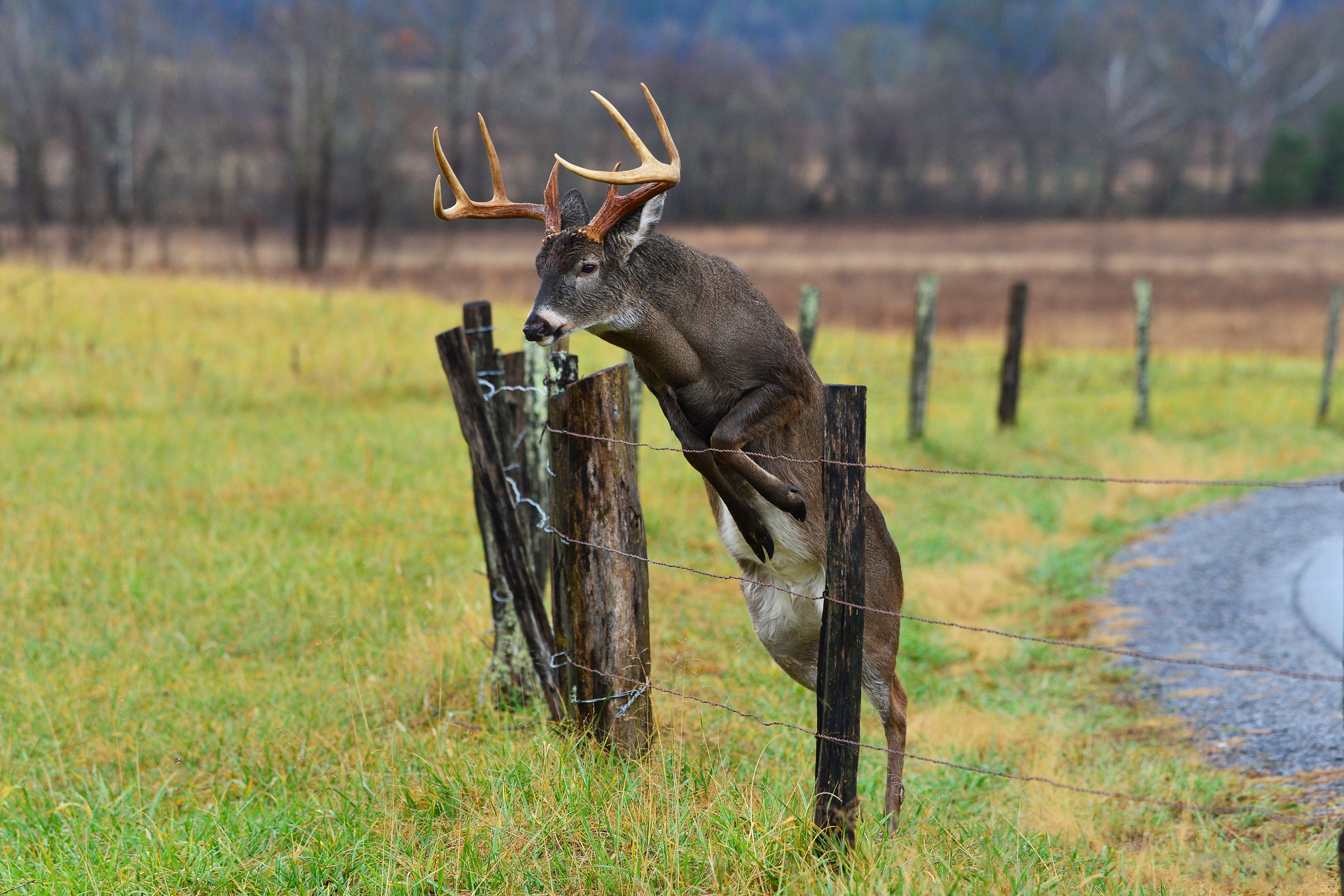

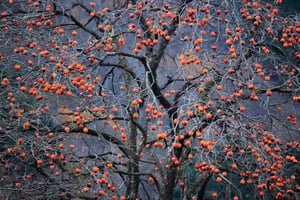 Persimmon
Persimmon